Nothing can stop the Oura Ring


If there is one product category that’s experiencing a big boon right now, it’s the smart ring. The first smart ring to hit the market and really take off was the Oura Ring. The current Oura Ring Gen 3 has been available since late 2021, and it’s quickly become the default smart ring of choice.
However, now we have several other options, such as the Movano Evie Ring, Ultrahuman Air, RingConn, the Circular Ring Slim, and more. Even Samsung will be entering the smart ring space soon with its own Galaxy Ring, which was teased at the end of the January Galaxy Unpacked event.
However, while there are more options available than ever before, the Oura Ring remains the best smart ring you can buy. Yes, even though it has that annoying subscription fee to get the most out of the ring itself, the other options just don’t hold a candle to the Oura Ring.
The Oura Ring is the best in its class

When you wear a health tracker, such as a smartwatch or smart ring, you want the health data it collects to be accurate. Otherwise, what’s the point if the data is going to be way off or just downright incorrect? This is an area where Oura kills it.
The biggest reason I wear an Oura Ring is for sleep tracking. I have and wear an Apple Watch Ultra, and though I’ve gotten accustomed to the size during the day, it’s still bulkier than I’d like when going to sleep. That’s where a smart ring comes in — it’s far less intrusive to wear to bed than a smartwatch, and once you get used to it, you pretty much forget it’s there.
I’ve been wearing the Oura Ring for several years now, and it has pretty much always been accurate with the times I fall asleep, detecting if I have any awake moments throughout the night and knowing when I actually wake up for the day. Even if I wake up for a while and then go back to sleep, it notices that, too. And if I am able to sneak in a quick nap during the day, it is pretty good about catching that, too, as long as I meet the criteria threshold.
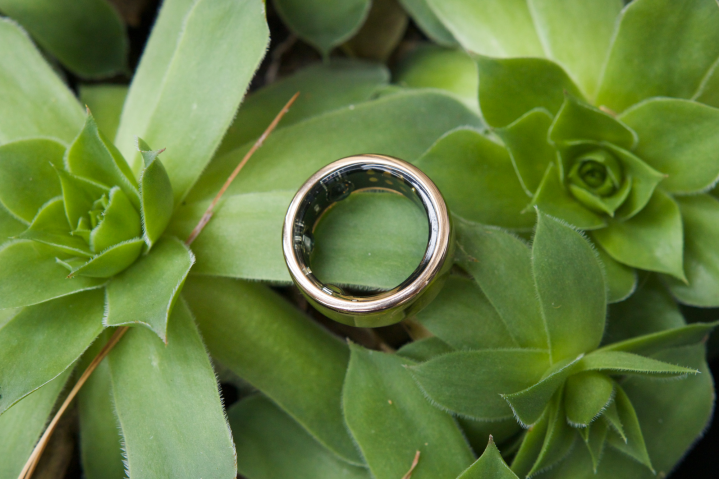
With the Oura Ring, you get three scores: Readiness, Sleep, and Activity. The Readiness score takes certain factors into account, such as the activity from the previous day, your sleep, resting heart rate, recovery, and more. The Sleep score is calculated based on restfulness, efficiency, REM and Deep sleep, latency, and timing. And your Activity score — well, that one’s pretty self-explanatory.
I think the Readiness score is a fantastic depiction of my energy level for each day. I say this because when I have a low score, I do, in fact, feel bad that day. Comparatively, when it’s high, I am well-rested and feel pretty good. When I have a low score, it gives me a reason to look into why I feel that way and makes me more aware if I’m coming down with something.
The Oura Ring is also great at actually detecting if I’m moving, similar to my Apple Watch Ultra. Even if I don’t log a workout with my Apple Watch, the Oura Ring detects when I’ve been walking for a period of time (such as one of my trips to Disneyland) and keeps logs of that in the Oura app. It’s one of the best things about the Oura Ring. I often forget that it’s there, but it’s always logging everything for me without me even needing to do anything — and with accuracy I can depend on.
Trying to use an Oura Ring alternative
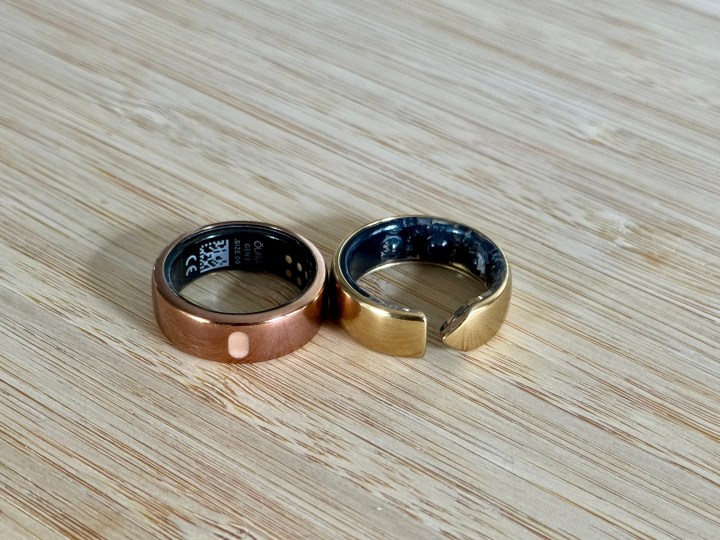
When Movano first announced the Evie Ring a few years ago, I was excited. A smart ring designed with women in mind? Sign me up! Well, I finally got one and tried it out, and I am extremely disappointed. I wore both the Oura Ring and Evie Ring together for a few weeks, and the Evie Ring just does not compete.
I mentioned it in my review, but the Evie Ring is wildly inaccurate, and the syncing was often painfully slow. There were also frequent discrepancies between it and the Oura Ring as to when I actually fell asleep and when I woke up. Often, the difference would be something big, like 30 minutes to an hour. And the Evie Ring would think I’m still asleep even though I’ve been awake for the past hour or so in the morning. I’m not sure how that even works.
The step count that the Evie Ring recorded also seemed abnormally high compared to my Apple Watch Ultra and Oura Ring. Furthermore, I was puzzled by Movano’s implementation of workouts—you just input the amount of time you plan for a workout session, and then the ring records the heart rate during that time. There is no way to specify if it’s a walk, run, cycling, or other kind of exercise. Honestly, it’s baffling that it’s done this way.
Movano’s design for the Evie Ring is unique and comfortable, but none of that really matters when it offers such skewed health data and barebones workout features. For what was supposed to be one of the better Oura Ring competitors, the Evie Ring was a real letdown.
Other competitors don’t hold up either

My experience with smart rings so far has only been with the Oura Ring and Evie Ring. However, my colleague, Andy Boxall, has reviewed several other smart rings for Digital Trends: the Ultrahuman Air, the RingConn Smart Ring, and the Circular Ring Slim. Some of those are certainly better than others, of course, but they still don’t quite match up with the greatness of the Oura Ring.
The Ultrahuman Ring Air is simple and comfortable to wear, which is fine and dandy. However, understanding the data that you get from it is a bit more complicated than the Oura Ring and requires more work on your part.
Not only are you asked to manually input things like your daily mood and even food and caffeine intake, but the Ultrahuman Ring Air uses very unique language to explain specific health metrics. The main focus is on light exposure and stimulants (e.g., caffeine), and it uses terms like “Phase Response Curve” (when it’s a good time to exercise, drink coffee, sleep), Circadian Dead Zone (daytime), Minima Time, Phase Advance, Phase Delay, and more.
Didn’t understand most of those terms? Yeah, most normal people don’t. Further, Ultrahuman doesn’t really explain what everything is, the significance of the data, or why you should care about these things in the first place. You get three number ratings for your movement, sleep, and recovery, like the Oura Ring, but there’s still a lot of extraneous data that just isn’t presented in the most user-friendly manner.
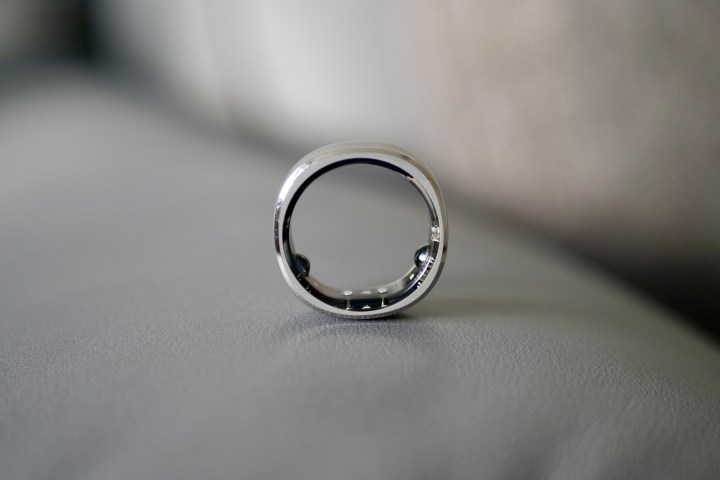
Due to the tapered edges, the RingConn Smart Ring‘s unique squircle shape could be considered more comfortable overall, though it’s slightly thicker than the Oura Ring. It may be a bit more noticeable in certain situations, like wearing gloves, but it isn’t enough to interfere with daily life.
Unfortunately, RingConn can’t do much at the moment. On its website, RingConn says that features like workout tracking, mindfulness, meditation, and cycle tracking are still under development. If you buy the RingConn Smart Ring now, these features won’t be available just yet.
Instead, the RingConn is currently a pretty simple sleep tracker with passive activity tracking throughout the day. It will monitor your sleep, stress, heart rate, blood oxygen levels, heart rate variability (HRV), skin temperature, and basic movement — all standard, expected health tracking features.
Again, those extra features will come in the future, but as of right now, the RingConn is still considerably more basic than the Oura Ring.
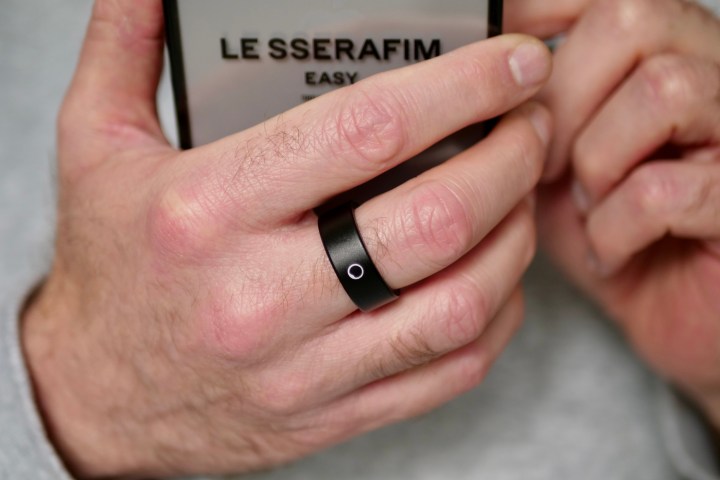
Similarly to the Evie Ring, the Circular Ring Slim is one of the worst smart rings we’ve reviewed. Though its design makes it one of the most comfortable smart rings out there, it falls short in both durability and reliability.
Unlike most of the smart rings we’ve tried, the Circular Ring Slim is made of aluminum, not titanium, which makes for poor durability. Within a few weeks of wear, it can show chips and scratches that reveal the metal underneath the matte black finish. It also lacks dust resistance, as it only has an IPX8 water resistance rating.
As for reliability, the Circular Ring Slim has been incredibly unreliable. It only tracks sleep and basic activity during the daytime, as there is no way to track exercise or workouts, and there isn’t even a way to add that data manually. The sleep tracking isn’t accurate either, as from Andy’s review, the Circular Ring Slim thought he was asleep when he simply sat down to relax in the evening. Because of this, the Circular smart ring thought he had gotten many more hours of sleep than he actually did, and that skewed data throws off everything else, including Circular’s other health recommendations.
Syncing the data to the app is also painful, as it is slow and can take a long time for all the data to show up. The only neat thing about the Circular is that it can have a silent vibrating alarm that you turn off by tapping on the logo twice. However, this is also unreliable because, in our testing, it never actually vibrated when it was supposed to.
The Oura Ring keeps getting better
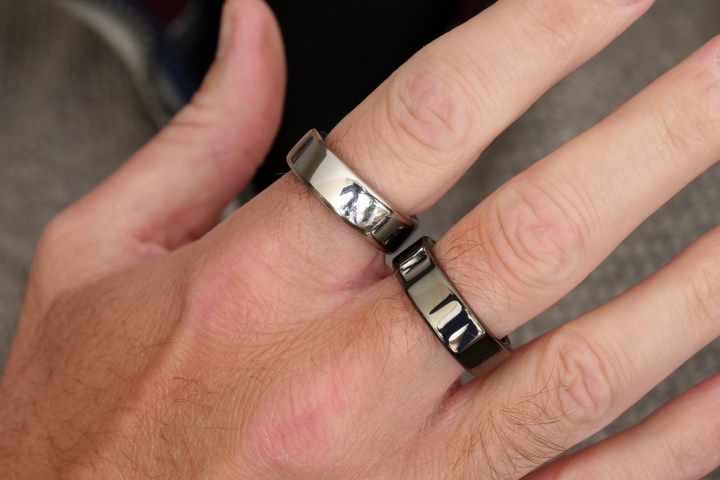
I’ve pointed out the issues with all of the Oura Ring competitors so far, but the Oura Ring hasn’t always been perfect either. I got the third-generation Oura Ring when it launched, and it certainly had its flaws.
For one, the Oura Ring 3 did not launch with all of its current features immediately, which was a drawback that many users weren’t too fond of. It did take a bit of time, but we eventually got new sleep-tracking features, SpO2 levels, workout HR tracking, and more.
Then, of course, we had the debacle of Oura switching to a subscription-based model, which is something many Oura competitors are avoiding. While that may be a selling point for those other rings, it doesn’t quite help when the data is inaccurate or hard to understand. Though I’m not a fan of Oura using a subscription model, I honestly think it’s worth it (at least for me) because it’s accurate and gives me good insights — something we can’t say about competing smart rings.
And despite the Oura Ring being the gold standard for smart rings, it continues to get better. In the last few months, Oura has added some new features like Resilience and even pregnancy insights for women. Oura even added a new brushed titanium finish, adding to its already impressive repertoire of color options.
It’s been a long road for the Oura Ring, but it’s been worth it since it’s the best smart ring we’ve tried. While the smart ring market is going through a boom, I’ve yet to find something better than the Oura Ring. And based on all of the competition we’ve already seen and tested, it looks like that’ll remain true for a while to come.
Editors’ Recommendations
-
The Oura Ring just got a lot more helpful if you’re pregnant -
Is this new smart ring the Oura Ring killer we’ve been waiting for? -
There’s a big problem with smart rings -
The Oura Ring showed me how months of stress destroyed my sleep -
Your Oura Ring is getting a major new health feature


